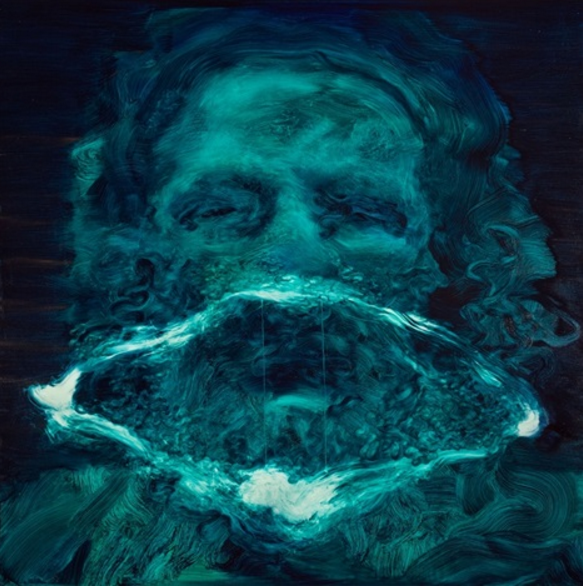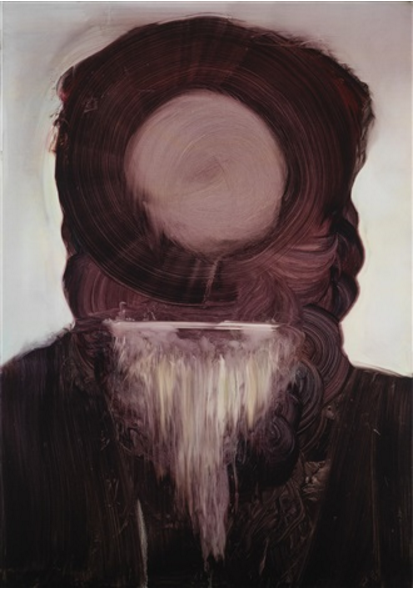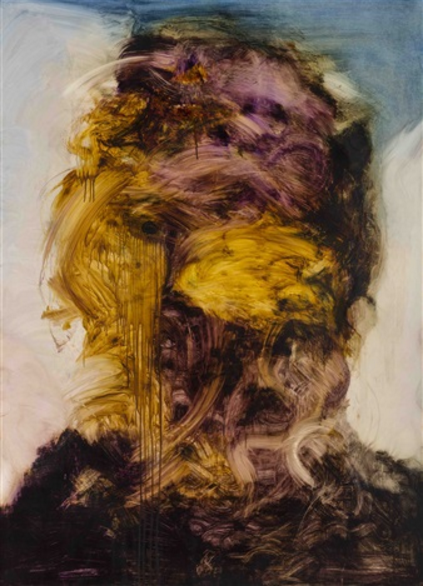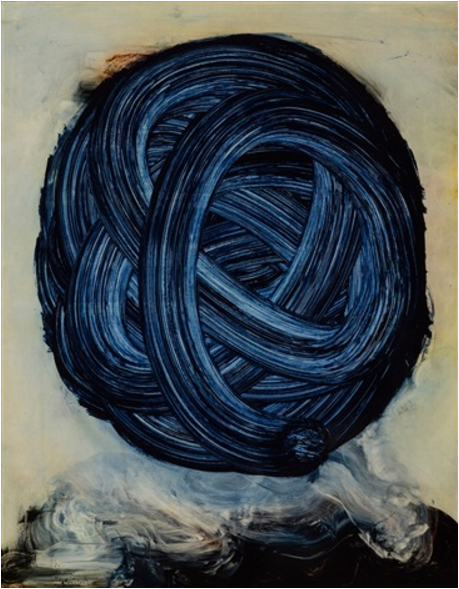People
artnet Asks: Painter Johan Van Mullem and the Art of Self-Discovery
His latest exhibition, "De Anima," is currently on view at Unit London.

His latest exhibition, "De Anima," is currently on view at Unit London.

Artnet Galleries Team

Belgian artist Johan Van Mullem has gained recognition for his unique approach to swirling, luminous portraiture—that is, if you could consider the faceless figure that emerge from his canvases as portraits. Working in a jewel-toned palette, his oeuvre evoke painful psychological interiority that earns him comparisons to Francis Bacon or Glenn Brown in his attempt to, as his current exhibition press release tells it, “divine the essence of man.”
His latest work is currently on view at the gallery Unit London through January 6, 2017 in an exhibition titled “De Anima,” and includes not just his iconic portrait series but sculptures and new landscape paintings as well. Here, we spoke with Van Mullem about his practice, the never-ending quest to remain open to unexpected possibilities, and his faith in the belief that the best is always yet to come.
What are some things that inspire you?
I have drawn, painted, and sculpted faces since I was a kid. I began with this theme, and have not stopped since. During my childhood, I drew old and wrinkled faces. I read true beauty and emotion in the weathered faces I found in magazines, books, and newspapers. I still paint faces, but without models, live or in photographs. It all comes from what I call a collective memory: I represent the human being, and mostly hidden emotions, through light and movement. It is a kind of “inner work.” Today, I also paint landscapes, which could mean that I am now ready to travel and discover the “outside” world. But I mainly believe that inspiration is something like pre-creation. To be inspired you first need to be free—in your mind, of course, but also in your body. To be “open” to inspiration means that you are ready to receive, or to share something with the environment.

Johan Van Mullem, P15046 (2015). Courtesy of Unit London.
Tell us about your current exhibition, “De Anima,” and why we should come.
The title, which means “on the soul,” draws on the idea developed by Aristotle that the soul is the form or essence of any living thing, and not a distinct entity separate from the body. My work is all about the inner self, unconsciousness, and emotion.
The works have the power to touch things you cannot see, or understand. My works do not evoke thoughts or ideas; I consider my work as an art of sublimation. Often people get attracted into the paintings without knowing exactly what they have seen, and they can spend hours discovering and travelling into those works. The new color and black-and-white works, with their relationship between figuration and abstraction, offer the feeling of “soul” and body, individuality, and humanity.
What are you working on at the moment?
The exciting thing about creation and the way I work is that I never know what is going to happen. I am working on a new black-and-white series which represents a totally new approach and a parallel world to my drawing. I am also developing my landscape work, and by working on faces and landscapes at the same time I feel I get closer and closer to abstraction.
The present is the result between past and future, which means that current works contain at the same time a kind of improvement and something new. A stealth idea can mature for a long period before it comes out waiting for the appropriated moment, and the moment can be suddenly different.

Johan Van Mullem, P14057 (2014). Courtesy of Unit London.
Do you have a motto for yourself, or your artistic process?
I believe in two important things: First, paint what you feel and not what you think. Other painters such as Van Gogh said “don’t paint what you see but what you feel.” The difficulty is to try and find your own way, your own personality, your own way to express things, and to arrive at a place where you can recognize yourself. You reach that place only by being yourself. Being honest with yourself takes time and needs practice and hard work. The idea is not to be “instructed” by the rational behavior full of mechanical thoughts and acts—often motivated by education—but to let your hands go there where you want to go, even if you don’t know the road or the way to do it. Discovery is much more important than what we think is certitude, because certitude is something like an emptiness, or fear. The only risk you take by doing what you feel is to discover yourself.
Secondly, the best is always to come. This means that each painting is a new step. There is no beginning and no end—the true instant of the present contains everything. The artistic process is something that never stops. It is a fundamental energy that is there whether you are tired or awake, in the light or darkness, happy or sad—you may create at any time. The instant I have the feeling, the painting—or any work—is finished. When I feel I have no longer any responsibility for it, when I decide to let it make its own way, I feel the distance between the work and myself, which grows until I reach the feeling I want and I need to make a new one.
Each step is at the same time an end and a beginning. That’s why it’s a privilege to be a painter, as you can measure that distance, the progress. And sometimes you reach a point you dreamed about, but at that moment you realize there is another dream behind it and so you never stop.

Johan Van Mullem, 13188 (2013). Courtesy of Unit London.
Do you ever hit a roadblock with your work? What do you do to overcome it?
Artist’s block doesn’t mean the end, and doesn’t necessarily mean having to go back or abandon the work. I believe those moments are a clear sign of development and progress. And, as the best is still to come, you must deserve it. The act of creation is challenging. I believe today that life is worth living, and I didn’t always believe that. In many respects, it’s hard work the taking of risks that gives life meaning.
I also believe that life is not an easy story, but it is the sum of good and bad, hard and easy, effort and rest that makes sense. So I cannot consider an eventual block as a disaster. It’s only the sign there is something important to discover somewhere else! I learned that things can change in a second, in both directions. This makes everything possible.
I am not a man of regularity or immovable habits. I moved over 25 times in my life and had different jobs. The most important block I had—I understand now—was myself. I considered for a very long time that the “outside” was blocking me and making it nearly impossible to be an artist, until I realized the only one responsible for it was myself. So once you understand that, you know the solution is in your own hands.
The artnet Gallery Network is a community of the world’s leading galleries offering artworks by today’s most collected artists. Learn more about becoming a member here, or explore our member galleries here.